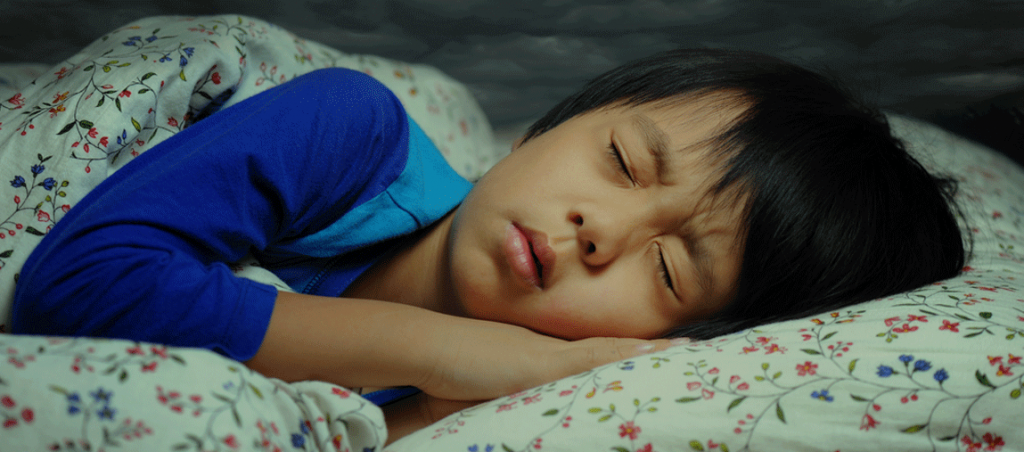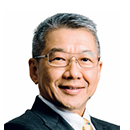This is the most common type of sleep disorder in children, affecting about 5% of them. But what does it mean and what does a parent need to know?

SDB includes two conditions, namely, Obstructive Sleep Apnoea (OSA) and snoring.
OSA is a condition that occurs when the upper airway is too narrow or is otherwise obstructed, leading to excess effort in breathing, snoring, lapses in breathing, and an inability to maintain adequate oxygen saturation during sleep.
The most common causes of upper airway narrowing or obstruction are large adenoids and tonsils, blocked nose from an allergy or infection, a deviated nasal septum, and large nasal turbinates. Another possible cause of snoring in children is a congenital abnormality of the facial or jaw bones.
PARENTS’ ALERT: SDB SIGNS
- Noisy, irregular or laboured breathing, sometimes with pauses
- Mouth-breathing. Children are obligate nose breathers, and mouth-breathing increases air resistance
- Restless sleep. Tossing and turning, sitting up and perspiring during sleep
- Chest retraction
- Bruxism (habitual teeth-grinding)
- Bed-wetting
- Difficulty in waking up
- Daytime sleepiness
- Morning headache
- Irritability, moodiness and inattention, with poor school performance
- ADHD (attention deficit hyperactivity disorder)
- Failure to thrive. Healthy growth is dependent on a growth hormone produced in the child’s brain during good sleep. Excessive expense of energy in respiratory and cardiovascular efforts in SDB affects a child’s growth
- ‘Adenoid facies’ or ‘long face’ syndrome. The way that a child holds his mouth in his first five years will contribute significantly to shaping the musculoskeletal development of the face, jaw and teeth. A mouth-breather and snorer will develop ‘long face’ syndrome, which will remain into adult life. These features may lead to OSA in adulthood
HOW TO MINIMISE SDB RISK
- Ensure sleeping environments are free from allergens such as dust, mould, animal dander and smoke
- Prevent obesity in your child. Fat ‘strangulates’ the airway
- Ensure your child is not consuming too much food and drink before bedtime, and is not excited before sleep
- Encourage sleeping on the side and not on the back, which narrows the upper airway as the soft palate and tongue fall backwards and obstruct the airway Establish a fixed time for bed
Parents should be aware and look out for all the above-mentioned tell-tale signs of this condition.
DIAGNOSIS
In most cases, a detailed history from the parents, and a video recording of the child’s sleep, together with a thorough clinical examination and videorhinolaryngoscopy (VRL) would be sufficient to decide the best treatment option. VRL is an extremely important tool for identifying the site(s) of airway obstruction. This procedure is available in most ENT clinics.
Polysomnogram or night time monitoring of respiratory, cardiac and brain activity may also be recommended.
CURE OPTIONS
Unlike adult cases, the majority of childhood SDB cases can be easily cured. In milder cases, certain lifestyle modifications may be all that are needed, such as sleeping on the side, a dustand smoke-free environment, regular sleep time, avoidance of a full stomach before bedtime, weight reduction, and treatment of nasal obstruction so as to avoid mouth breathing.
Allergic rhinitis and sinus infection causing nasal obstruction can often be treated and controlled medically.
When lifestyle modifications fail, the airway obstruction must be eradicated medically or surgically, and that would cure most cases.
The common surgical treatments for airway obstruction are tonsillectomy, adenoidectomy and turbinate reduction surgery.
In cases that are hard to treat, CPAP (Continuous Positive Air Pressure) therapy would be necessary: the child wears a mask over the nose and sometimes the mouth, which is linked to a special air pump to assist respiration during sleep.
In extremely rare and severe cases like those involving facial and jaw deformity, tracheostomy may be needed when all other treatments fail.
Sleep Disorders and Kids
Statistics over the last 25–35 years have shown the incidence of SDB to be about 5% in children. There were hardly any statistics before this, as the condition was not well recognised or understood, and was often left undiagnosed and untreated. Most doctors at that time deemed snoring and SDB normal and harmless.
Rather than the incidence of SDB increasing, it is more likely that doctors are now more aware and have a deeper understanding of the condition, and are better equipped to recognise and diagnose it.







